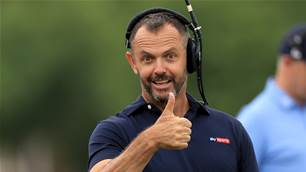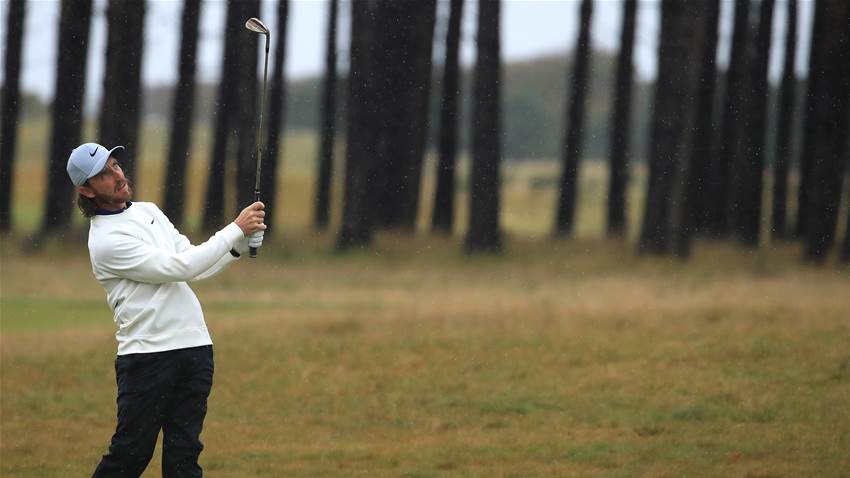Picture the scene. In weather that was a wee bit windy and damp (okay, it was blowing a gale and the rain was coming down sideways) Tommy Fleetwood is on the par-3 14th tee at the Renaissance Club during the third round of last year's Scottish Open.
One day later, the 30-year old Englishman would lose to Aaron Rai at the first hole of their sudden-death play-off. To do so, Fleetwood missed from not much more than three-feet, badly pulling his putt to the point where his feeble effort did not even touch the edge of the cup.
Still, such miserable failure was in complete contrast to the shot this consummate ball-striker conjured up off that 14th tee. But let’s allow Fleetwood to start the story properly.
“(Caddie) Ian (Finnis) gave me the yardage but there was literally no point in even discussing a club,” he said afterwards, while displaying what his wife would describe on Twitter as “his fully-clothed just out of the shower look. “It was pick a club and create something with it.”
That, at least for me, has to be the quote of the year in golf. No contest.
Far removed from the “golf by numbers” trend that has made a great game good at the elite level, this was a proper shot hit by a proper golfer. All about subtlety and nuance, it had nothing to do with science and everything to do with art. Punched low through the wind, his follow through perfectly “sawn off,” Fleetwood’s ball never left the flag and finished no more than a few feet away. And yes, he made the putt for birdie.
“All about subtlety and nuance, it had nothing to do with science and everything to do with art.”
It was a beautiful thing to see. And, later, his comment was a beautiful thing to hear. This was a genuinely great player hitting a great shot by using his club – whatever it was he used in the end – as a rapier not a sledgehammer. The yardage provided by the ever-amiable “Finno” was at best a mere starting-point, at worst an irrelevance. As Fleetwood remarked, it meant nothing. This was a shot that had everything to do with visualisation and nothing to do with numbers.
Ah yes, numbers.
More and more the professional game is driven by statistics. The Trackman gizmos have a lot to do with that. So do yardage books and those awful green-reading books many players now use to mitigate their lack of touch and feel. All of which is point-missing on the grandest scale.
At its best, golf is a glorious mixture of decision-making, judgement of distance, measurement of pace all mixed together to make up the aforementioned test of touch and feel. While it is near impossible to eliminate all of the above, because of the game’s infinite variables and the immutable fact that it is played outdoors (see Scotland in October), there is no doubt that, at professional libel, the men in white coats are more and more influential.
For those Twitter devotees amongst you, search for footage of Lee Trevino standing on the 12th tee at Augusta National during a now far-off Masters. As soon as the green clears up ahead, the six-time major champion walks to his bag, takes out a club, addresses the shot and hits. The ball ended up four-feet from the flag. And it all took eight seconds. Genius at work.
“At its best, golf is a glorious mixture of decision-making, judgement of distance, measurement of pace all mixed together to make up the aforementioned test of touch and feel.”
Contrast that with the convoluted preparations Rai goes through before he feels able to initiate the very thing he spends his professional life doing – swinging the club. The 26-year old Englishman – who wears a glove on each hand for every full shot – is a highly-promising player and, judging by his post-play-off interview at the Scottish, a very nice chap indeed. But oh-my goodness, he is slow, a point publicly pointed out by former Open champion Paul Lawrie back in 2018.
Playing tardily does not make Rai unique, of course. Far from it. But he is slow largely because of those damned numbers. It is the calculating that seems to take up most of his pre-shot time. In the eight seconds it took Trevino to do everything necessary to hit a great shot, Rai barely moves, other than to pull some numerical research from his back pocket. Then we get into the studying of the books. The chats with the caddie. And, eventually, the selection of a club. All before any prospect of said club actually making contact with a ball.
It’s all madness. And it is hurting professional golf as a spectator sport, quite apart from the fact that just about no one plays like Trevino any more. Better? I think not. We need to listen to Tommy before it’s too late.
Related Articles

Huggan: Is McIlroy the best European golfer of all time?

Column: Spread the Scottish Open’s wings once again













